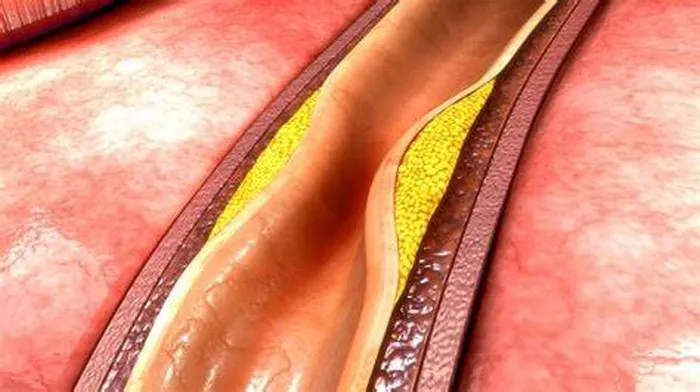Calcium buildup in the arteries, also known as arterial calcification, is a common occurrence in individuals with cardiovascular disease. This process involves the deposition of calcium salts in the walls of arteries, which can lead to the narrowing and hardening of these blood vessels. Understanding the causes of calcium buildup in heart arteries is crucial for managing and preventing cardiovascular complications. In this article, we will explore the various factors that contribute to arterial calcification and delve into the mechanisms behind this phenomenon.
Arterial calcification is a complex process that occurs over time and is influenced by multiple factors. It is often associated with atherosclerosis, a condition characterized by the buildup of plaque in the arteries. Plaque is composed of cholesterol, fat, calcium, and other substances that can accumulate and form a hardened deposit on the arterial walls. While atherosclerosis is a significant contributor to arterial calcification, other factors can also play a role in this process.
Risk Factors for Arterial Calcification
Several risk factors increase the likelihood of developing calcium deposits in heart arteries. These risk factors can be categorized into modifiable and non-modifiable factors.
Modifiable Risk Factors
1. High Blood Pressure (Hypertension): Chronic high blood pressure can damage the inner lining of arteries, making them more susceptible to calcium buildup.
2. High Cholesterol Levels: Elevated levels of LDL (low-density lipoprotein) cholesterol, often referred to as “bad” cholesterol, can contribute to plaque formation and arterial calcification.
3. Smoking: Tobacco smoke contains harmful chemicals that can damage blood vessels and promote atherosclerosis, leading to calcium deposits in arteries.
4. Diabetes: Uncontrolled diabetes can increase the risk of arterial calcification due to its effects on blood sugar levels and blood vessel health.
5. Obesity: Excess body weight and obesity are associated with inflammation and metabolic changes that can accelerate the progression of atherosclerosis and arterial calcification.
6. Lack of Physical Activity: Sedentary lifestyle habits can contribute to the development of cardiovascular risk factors such as obesity, high blood pressure, and abnormal cholesterol levels, all of which can contribute to arterial calcification.
Non-Modifiable Risk Factors
1. Age: As individuals age, the risk of arterial calcification increases. This is partly due to the cumulative effects of other risk factors over time.
2. Genetics: Family history and genetic factors can influence an individual’s susceptibility to atherosclerosis and arterial calcification.
3. Gender: Men tend to have a higher risk of arterial calcification compared to premenopausal women. However, the risk for women increases after menopause.
4. Ethnicity: Certain ethnic groups may have a higher predisposition to cardiovascular disease and arterial calcification.
Mechanisms of Arterial Calcification
The process of arterial calcification involves several mechanisms that contribute to the deposition of calcium in the arterial walls.
1. Endothelial Dysfunction: Damage to the endothelium, the inner lining of blood vessels, can trigger inflammatory responses and promote the accumulation of calcium and other substances in the arterial walls.
2. Inflammatory Processes: Chronic inflammation within the arteries can contribute to plaque formation and calcification. Inflammatory cells and cytokines play a role in this process.
3. Oxidative Stress: Imbalance between antioxidants and reactive oxygen species (ROS) can lead to oxidative stress, which contributes to endothelial dysfunction and arterial calcification.
4. Smooth Muscle Cell Transformation: Smooth muscle cells in the arterial walls can undergo changes that promote calcification. This transformation is influenced by various signaling pathways and regulatory factors.
5. Calcium Metabolism: Dysregulation of calcium metabolism within vascular cells can lead to abnormal calcium deposition in the arteries. Factors such as vitamin D, parathyroid hormone, and calcification inhibitors play a role in this process.
Diagnosis and Management
Arterial calcification can be detected through imaging tests such as coronary calcium scoring using computed tomography (CT) scans. Management strategies for arterial calcification aim to address underlying risk factors and reduce the progression of atherosclerosis.
1. Lifestyle Modifications: Adopting a healthy lifestyle that includes regular exercise, a balanced diet, smoking cessation, and weight management can help reduce the risk of arterial calcification.
2. Medications: Medications may be prescribed to control blood pressure, cholesterol levels, and blood sugar in individuals with risk factors for arterial calcification.
3. Medical Procedures: In some cases, medical procedures such as angioplasty or coronary artery bypass grafting (CABG) may be necessary to treat severe arterial blockages caused by calcification.
Conclusion
Arterial calcification is a complex process influenced by various risk factors and underlying mechanisms. Understanding the causes of calcium buildup in heart arteries is essential for developing effective prevention and management strategies for cardiovascular disease. By addressing modifiable risk factors and promoting cardiovascular health, individuals can reduce their risk of developing arterial calcification and its associated complications.


